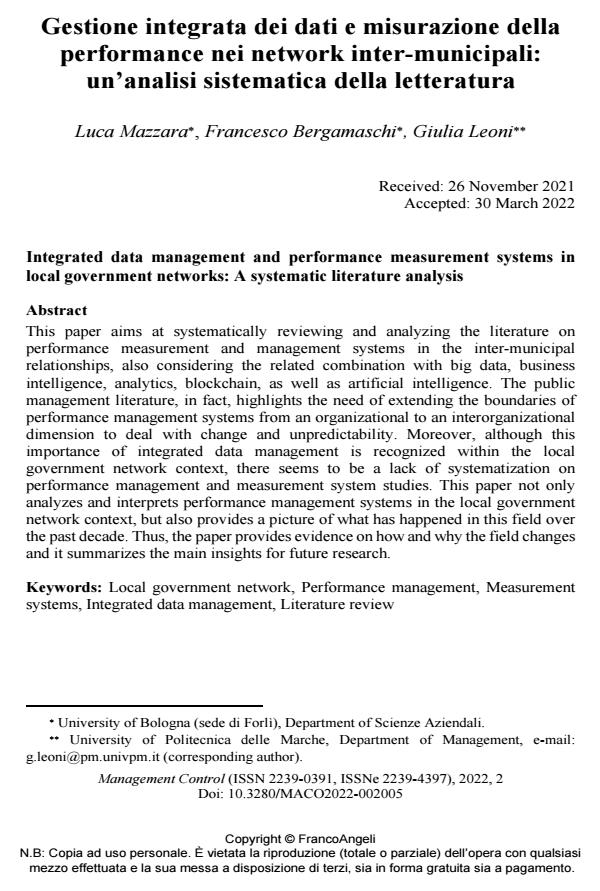Integrated data management and performance measurement systems in local government networks: A systematic literature analysis
Journal title MANAGEMENT CONTROL
Author/s Luca Mazzara, Francesco Bergamaschi, Giulia Leoni
Publishing Year 2022 Issue 2022/2
Language Italian Pages 26 P. 91-116 File size 334 KB
DOI 10.3280/MACO2022-002005
DOI is like a bar code for intellectual property: to have more infomation
click here
Below, you can see the article first page
If you want to buy this article in PDF format, you can do it, following the instructions to buy download credits

FrancoAngeli is member of Publishers International Linking Association, Inc (PILA), a not-for-profit association which run the CrossRef service enabling links to and from online scholarly content.
This paper aims at systematically reviewing and analyzing the literature on performance measurement and management systems in the inter-municipal relationships, also considering the related combination with big data, business intelligence, analytics, blockchain, as well as artificial intelligence. The public management literature, in fact, highlights the need of extending the boundaries of performance management systems from an organizational to an interorganizational dimension to deal with change and unpredictability. Moreover, although this importance of integrated data management is recognized within the local government network context, there seems to be a lack of systematization on performance management and measurement system studies. This paper not only analyzes and interprets performance management systems in the local government network context, but also provides a picture of what has happened in this field over the past decade. Thus, the paper provides evidence on how and why the field changes and it summarizes the main insights for future research.
Keywords: Local government network, Performance management, Measurement systems, Integrated data management, Literature review
- Controllo di gestione e relazioni intraorganizzative: la prospettiva del controller Oppi Chiara, Vagnoni Emidia, Cattaneo Cristiana, Galizzi Giovanna, in MANAGEMENT CONTROL 3/2024 pp.155
DOI: 10.3280/MACO2024-003008
Luca Mazzara, Francesco Bergamaschi, Giulia Leoni, Gestione integrata dei dati e misurazione della performance nei network inter-municipali: un’analisi sistematica della letteratura in "MANAGEMENT CONTROL" 2/2022, pp 91-116, DOI: 10.3280/MACO2022-002005